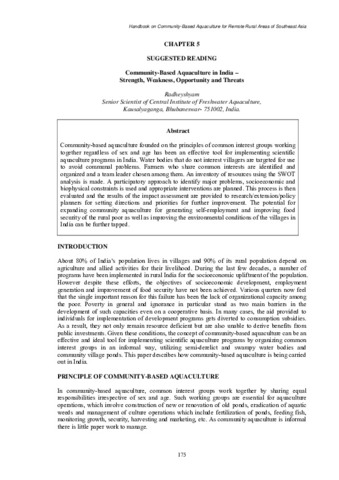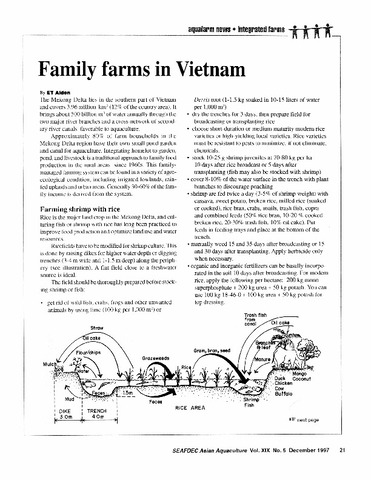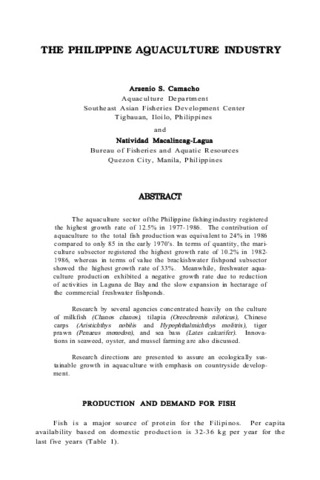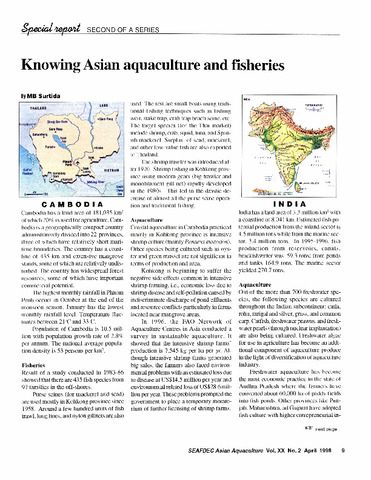Community-based aquaculture in India - strength, weakness, opportunity and threats
Share
ບົດຄັດຫຍໍ້
Community-based aquaculture founded on the principles of common interest groups working together regardless of sex and age has been an effective tool for implementing scientific aquaculture programs in India. Water bodies that do not interest villagers are targeted for use to avoid communal problems. Farmers who share common interests are identified and organized and a team leader chosen among them. An inventory of resources using the SWOT analysis is made. A participatory approach to identify major problems, socioeconomic and biophysical constraints is used and appropriate interventions are planned. This process is then evaluated and the results of the impact assessment are provided to research/extension/policy planners for setting directions and priorities for further improvement. The potential for expanding community aquaculture for generating self-employment and improving food security of the rural poor as well as improving the environmental conditions of the villages in India can be further tapped.
Suggested Citation
Radheyshyam. (2008). Community-based aquaculture in India - strength, weakness, opportunity and threats. In Handbook on Community-based Aquaculture for Remote Rural Areas of Southeast Asia (pp. 175-179). Bangkok, Thailand: Secretariat, Southeast Asian Fisheries Development Center.
ວິຊາ
Related items
Showing items related by title, author, creator and subject.
-
Family farms in Vietnam
Aldon, Eva T. (Aquaculture Department, Southeast Asian Fisheries Development Center, 1997) -
The Philippine aquaculture industry
Camacho, Arsenio S.; Macalincag-Lagua, Natividad (Aquaculture Department, Southeast Asian Fisheries Development Center, 1988)The aquaculture sector of the Philippine fishing industry registered the highest growth rate of 12.5% in 1977-1986. The contribution of aquaculture to the total fish production was equivalent to 24% in 1986 compared to ... -
Knowing Asian aquaculture and fisheries
Surtida, Marilyn B. (Aquaculture Department, Southeast Asian Fisheries Development Center, 1998-04)This article is the second of four parts.





